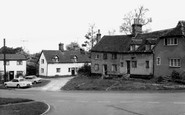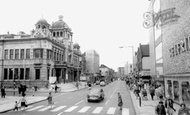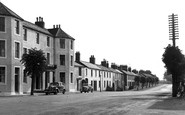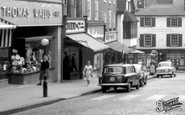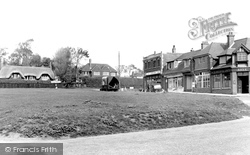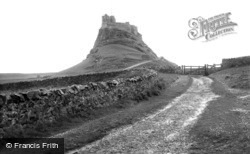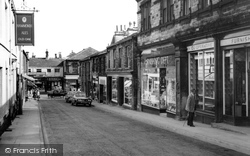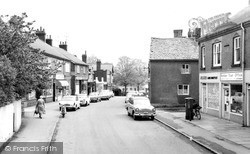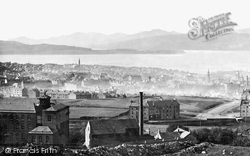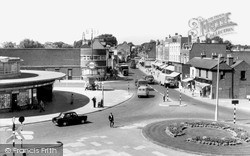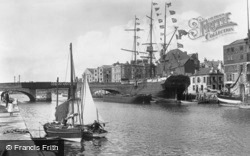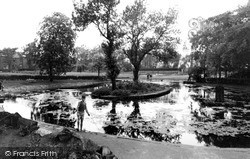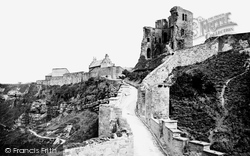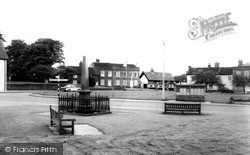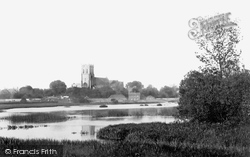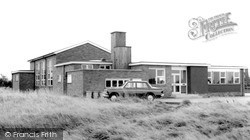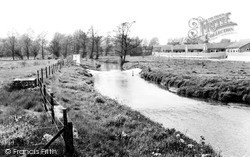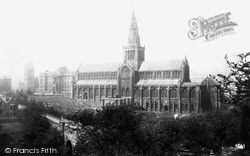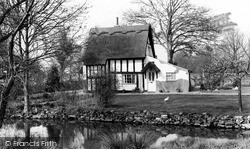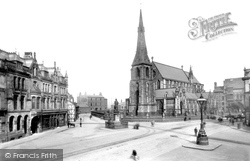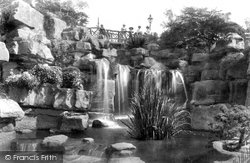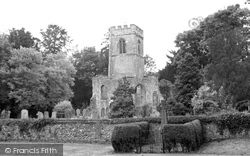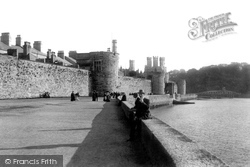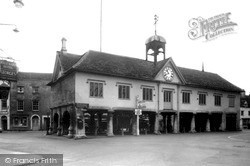Places
1 places found.
Those places high-lighted have photos. All locations may have maps, books and memories.
Photos
Sorry, no photos were found that related to your search.
Maps
22 maps found.
Books
1 books found. Showing results 361 to 1.
Memories
421 memories found. Showing results 151 to 160.
The Ransons Move To Castle Hedingham
We arrived in Castle Hedingham around the turn of the year 1964/5, Mum, Dad, my three little brothers and myself. Our newly built house was just out of shot to the left of this photo of Pye Corner. Mum ...Read more
A memory of Castle Hedingham in 1965 by
Convent Of The Visitation Bridport Dorset
CHAPTER TWO School Years - Convent of the Visitation 1939-1945 One’s school years leave an indelible impression on one for good or bad. My views over these years in this regard, have modified ...Read more
A memory of Bridport in 1940 by
I Was One Years Of Age In 1965
Good static shot, black & white (b&w), no doubt Ilford film, the best b&w in the world. I was 1 years of age having been born in 1964 about two or three roads away from where this shot was taken, it's ...Read more
A memory of Ilford in 1965
St Marys School And Church Hall
I was born and grew up in East Barnet and went to St, Mary's C of E Junior and Mixed Infants School in Churchill Road. It was a small school with only four classes and the boys left at seven and ...Read more
A memory of East End in 1940 by
Memories Of My Time At Newton On Ouse
I was born at Newton On Ouse in March 1928. At the age of five I attended the local school whose headmaster was Alf Bradbury. Also at the age of five I began visiting Village Farm that was owned by ...Read more
A memory of Newton-on-Ouse in 1930 by
My Memories Of Hindringham
I was born in Hindringham to Eva and John (Jack) Smith and attended the village school (the one at the foot of Church Hill). The principal was Miss Flood and the infant teacher Miss McDonald. My mother ran the village ...Read more
A memory of Hindringham by
Longtown High Street
My great-great grandfather was George 'Dood' McKie and he lived in a house about six doors beyond the Graham Arms Hotel which is shown in the Francis Frith photo number L203002. He was one of those Longtown characters who are ...Read more
A memory of Longtown in 1880 by
More Precise Date
This photo could not have been taken before 1959. I began my first job in July that year as part of the staff that opened the Thomas Wallis store for the first time. (Thank you for the information, we have now updated our records to circa 1960, Editor)
A memory of Guildford by
I Lived There As A Young Girl
I lived in bagby from the age of 5 months, from 1934 to 1942/3 My father was Police Constable Jim Conway and we lived in the house next to Bells Cattle transporters. I went to the school there and also attended the ...Read more
A memory of Bagby in 1930 by
The Farm On The Hill
I began my life's journey at Ty Gwyn farm in 1951 just before my 2nd birthday. I even remember climbing.the stairs at 1year 10 months. I would walk down Penywern Road to the Wern school. I remember standing on a chair in ...Read more
A memory of Ystalyfera in 1954 by
Captions
469 captions found. Showing results 361 to 384.
The village began to expand in 1866-1867 when a local man came up with a scheme to transform it into a popular seaside resort.
Construction began in 1542 and was completed by 1550, using stone salvaged from the Benedictine priory.
New streets began to be laid out as the town's population increased with the influx of new workers.
Although close to the River Soar, it was not until the arrival of the railway that it began to expand.
A new graving dock was built in the early 1870s and work on the James Watt Dock began in 1881. In this view, we see the smoking chimneypots of Greenock and the entrance to Gare Loch.
Development began in around 1870 with the arrival of the Great Northern Railway, but it was the arrival of the Piccadilly Line in 1933 that produced mass housing.
The trade with the Channel Islands and France began soon after the Norman Conquest.
Part of it was used as a rubbish tip, but landscaping began in 1905 with the laying out of the first bowling green.
The building of Scarborough Castle began around 1135. The castle was the scene of the first action by the barons against Edward II.
The staunchly Royalist Wentworth family arrived in 1614; Lord Wentworth and his son fled to command the Royalist cavalry when war began.
Roger Flambard, the Bishop of Durham and the king`s trusted adviser, began this largely Norman building towards the end of the 11th century.
It could be said that the modern history of Barrow-in-Furness began with the birth of the Furness Railway in 1846, when a line was opened from Kirky and Crooklands to Rampside and Barrow.
Most of the building is under a flat roof, which doubtless very soon began to leak! Dustbins arranged along the front of the building might today be considered a health hazard.
Town and canal prospered for some 50 years but, with the advent of the railway, the Ivel Navigation Trust began to incur heavy losses and in 1876 the Trust and its canal were closed.
It was there that Lord Joseph Lister first began antiseptic treatment and Dr John Macintyre was the first to use X-rays for diagnosis.
They began a local business, and in 1939 transferred the tapestry workshop to Cambridge, leaving the metalwork in the hands of local craftsmen, Olney and Newbury.
It could be said that the modern history of Barrow-in-Furness began with the birth of the Furness Railway in 1846, when a line was opened from Kirky and Crooklands to Rampside and Barrow.
Demolition began in 1870, but once again the tower and spire were spared. A new chancel and nave were erected between 1872 and 1876.
The work began in 1892. This feature built by the road was an artificial waterfall and rustic bridge, with rocks giving the impression of a mountain scene.
Construction began in 1834 and was completed by 1846.
When he built Ayot House, Sir Leonard Lyde found that the old church had blocked his view, and began to demolish it without permission from the bishop.
Simultaneous construction of the castle and town wall began in the summer of 1283. The wall, which enclosed the medieval borough, is 800 yds long with eight towers and two twin-towered gateways.
When coal mining began on a commercial scale, the town's fortunes grew rapidly.
Legend relates that the lord of the manor of Tetbury was sailing across the Irish Sea when his ship was holed and began to sink.
Places (1)
Photos (0)
Memories (421)
Books (1)
Maps (22)

